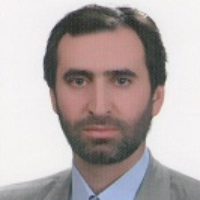Designing of research curriculum, based on Akker pattern for high school teacher
This research has been done in order to design the research curriculum of secondary school teachers based on the Akker pattern in 2019-2020.research
The research is an applied goal and has been done with a qualitative synthesis method. The statistical population of this research includes all the top research teachers of the second year of high school in West Azerbaijan province whose number is 20 people and the elites and experts of the curriculum. The statistical sample includes 20 top research teachers of the second year of high school in West Azerbaijan province and 10 elite and curriculum experts who have at least two books and 5 scientific research articles, using purposive sampling to select data saturation Were. In this research, first by considering the Akker pattern, the elements of the research curriculum are identified and then to answer the research questions, first based on semi-structured interviews, the views of sample research teachers and elites and curriculum experts are extracted and then by coding the answers. The interviewees were coded and the final categories were determined and the final model was developed based on it.
The results show that according to Akker pattern, the most important components or categories of the final model of teachers' research curriculum are: 1- The element of logic and reason of teachers' research curriculum: research skills training - formation of research and participatory spirit, 2-
research skills training - creating research spirit - research-based teaching - creating problem-solving skills in students, 3- Content element: Familiarity and application of all research process, 4- Element of learning activities: ability to formulate research plan - conduct experimental research, 5- Element of role of teachers: creating a platform and guiding students in conducting research, 6- Element of materials and resources: research books - Review of research, 7- Element of grouping: designing individual and group exercises, 8- Element of place: classroom for group discussion - Creating opportunities for e-learning, 9- Element of time: flexibility in time, 10- Evaluation element: self-assessment - Doing practical research work.
- حق عضویت دریافتی صرف حمایت از نشریات عضو و نگهداری، تکمیل و توسعه مگیران میشود.
- پرداخت حق اشتراک و دانلود مقالات اجازه بازنشر آن در سایر رسانههای چاپی و دیجیتال را به کاربر نمیدهد.



